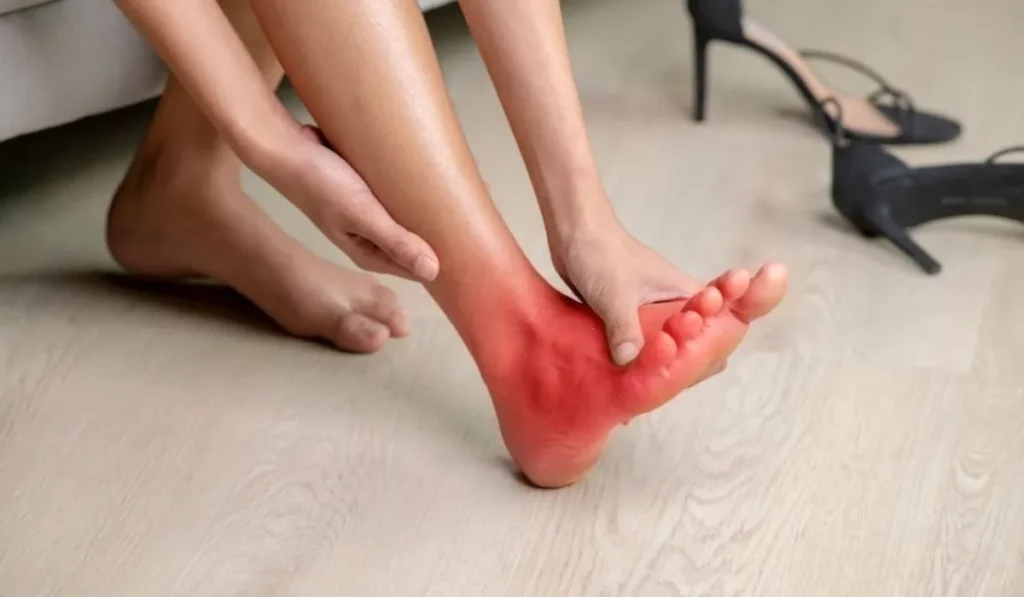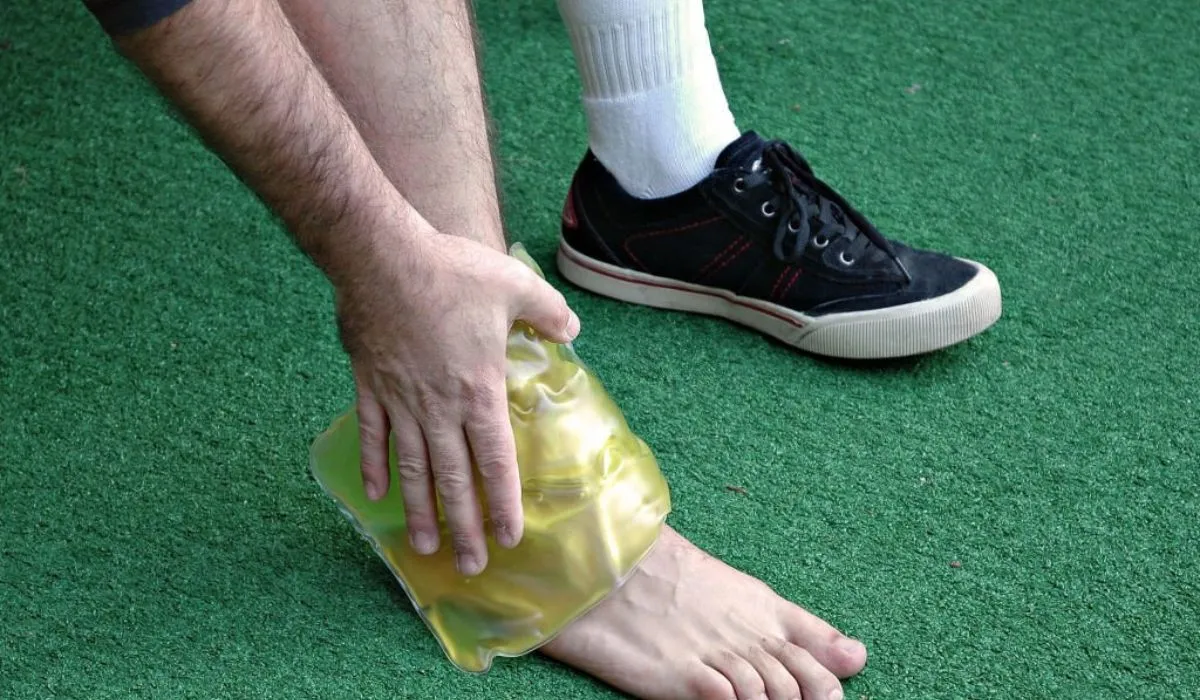In the football world, injuries are an unfortunate yet regular part of the game. Of all the injuries athletes can suffer, high ankle sprains are infamous for their effect on players’ performance and livelihood. What are high ankle sprains or syndesmotic sprains? This post covers everything you need to know about high ankle sprain football recovery time, including the factors that affect return, rehab protocols, and RTP strategies.
Understanding High Ankle Sprains
Also known as a syndesmotic sprain, an injury to the ligaments that connect your tibia and fibula in your lower leg Uncommonly referred to as the misplaced syndesmosis above, a high ankle sprain is a more involved procedure compared with their lateral ligament cousins down below. The difficulty with these injuries is that they are just so hard on football players, given that the nature of the sport involves a lot of pivoting, cutting, and quick direction changes.

Factors Influencing Recovery Time
Several factors come into play when determining the recovery time for high ankle sprains in football players. These factors include:
Severity of the Injury The quantum of damage to the ligaments determines how long it takes to heal. The inflexibility of high ankle sprains varies, with more severe bones having longer recovery times.
Individual Healing Rate: Each athlete’s body is unique, and their ability to heal varies. Some players may recover more quickly due to superior genetics or excellent physical condition.
Rehabilitation: The quality and intensity of the rehabilitation program are crucial. Players who diligently follow their rehabilitation plans are more likely to recover faster and regain strength and stability.
Medical Support: Access to top-notch medical care and rehabilitation specialists can significantly impact recovery time. Professional athletes often have an advantage in this regard.
Former Injuries: Athletes who have preliminarily hurt their ankles could be more at risk for further injury, with a longer time demanded to heal the injured ligaments.
Rehabilitation Strategies
Recovery from a high ankle sprain in football requires a structured and well-covered recuperation program. Then there are some crucial strategies.
Rest and Immobilization: Initially, players may need to rest and use a brace or cast to incapacitate the injured ankle. This prevents further damage and allows the ligaments to heal.
Physical Remedy: Physical therapists play a pivotal part in the recovery process. They design customized exercise programs to strengthen the ankle, ameliorate range of motion, and enhance stability.
Progressive and Gradual Weight-Bearing: Exercises help players recapture confidence in their injured ankles. This process must be precisely supervised to avoid lapses.
Balance and Proprioception: Training Football players calculate heavily on balance and proprioception. Specific exercises can help retrain the ankle and ameliorate these aspects of performance.
Sport-Specific Training: As recovery progresses, athletes transition to sport-specific exercises to simulate football movements. This phase is essential for a successful return to play.
Read More:- Rehabilitation After Shoulder Surgery For Athletes: Recovery Secrets
Return-To-Play Process
Returning to football after a high ankle sprain is a gradual process that involves several stages:
Medical Clearance: Before resuming any football-related activities, players must receive medical clearance from their healthcare provider. This ensures that the ankle is sufficiently healed and stable.
Progressive Training: Athletes start with light drills and non-contact activities. They gradually increase the intensity and complexity of training sessions under the supervision of coaches and medical staff.
Full Contact: Once players demonstrate sufficient strength, stability, and confidence in their ankles, they can participate in full-contact practices and scrimmage situations.
Game Readiness: Before returning to competitive play, athletes must feel comfortable with their ankle’s performance in practice scenarios. Coaches and medical professionals evaluate their readiness for games.
Monitoring and Maintenance: Even after returning to play, ongoing monitoring and maintenance are essential. Players may require ongoing rehabilitation and injury prevention exercises to reduce the risk of re-injury.
Read More:- Recovery Strategies For Athletes With Concussion: Expert Tips And Techniques
Conclusion
While an athlete’s high ankle sprain can be a ruinous reversal, there’s a stopgap for recovery with the proper strategy. The word nanny at the end makes it more realistic. A systematized recovery program under the supervision of the medical labor force and physical therapists is imperative to the success of a return-to-play strategy.
Like any other injury, time and trouble are demanded for footballers to get back to their game and reduce unborn ankle problems.
FAQ
Q1: What’s A Syndesmotic Ankle Sprain, And How Is It Different From a Regular One?
A high ankle sprain also called a syndesmotic sprain, involves ligament damage between the tibia and fibula above the ankle joint. Nonetheless, frequently sprained ankles focus around the ankle joint and have to do with the lateral ligaments. High ankle sprains typically have a bit more difficulty with not just the unique location but also the specific rigors of football.
Q2: What Variables Affect High Ankle Sprain Healing Times?
What patients should know is that “recovery time can be affected by injury severity, individual healing rates, rehabilitation compliance/mechanisms of care, available medical support (if any at all), and previous ankle injuries.” All these factors together determine how long it takes to recover.
Q3: What Does Rehab For A Syndesmosis Sprain Look Like?
Rehabilitation usually involves “active rest,” physical therapy, strength and stability exercises, partial weight-bearing activities, balance and proprioception training, and sport-specific drills and skills to simulate those used in football.
Q4: What Is The RTP protocol for football players rehabbing high ankle sprains?
The RTP process consists of several phases: being cleared, progressing to full practice, passing the game-ready assessment, and then monitoring. Players have to get medical clearance and show they are ready to compete again before going back.
Q4: What Are Some Strategies That Football Players Can Employ To Minimize The Incidence Of Reinjury Post-High Ankle Sprain?
To reduce the chances of re-injury, athletes must progress their rehab and include a structured ankle strengthening program. Consistent monitoring and maintenance are crucial for the long-term health and performance of the ankle.
Our recommendations are rooted in genuine belief in the benefits of the products bring to users. When you purchase through our links, we may earn a commission, supporting our testing and development without adding any cost for you. Learn more.

Dr. David G Kiely is a distinguished Medical Reviewer and former General Medicine Consultant with a wealth of experience in the field. Dr. Kiely’s notable career as a General Medicine Consultant highlights his significant contributions to the medical field.


